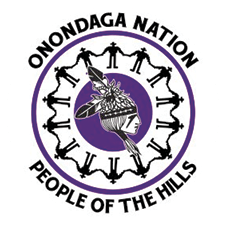Oñgwaweñna’
By Gerry Jamieson
The turtle is a culturally significant species to the Haudenosaunee that is facing a worldwide population decline due to habitat destruction or modification caused by development and/or remediation. Habitat destruction or modifications are among the leading causes of decline for all animals, including reptiles. It is estimated that at least half of all the 260+ turtle species populations are in serious decline worldwide. In some parts of the world such as Canada, 7 of the 12 species of turtles identified in that country are listed as species at risk by the Committee on the Status of Endangered Wildlife in Canada. Closer to home, in New York State, 11 out of the 21 turtle species identified in the state are considered as either species at risk, threatened or endangered. Researchers now predict that over 100 species of turtles will go extinct if severe conservation and protection strategies are not implemented soon.
Outside of our cultural interest, turtles play central roles in most terrestrial and fresh-water ecosystems. They are major predators on soil and aquatic invertebrates, and form essential links in food webs and are also food sources for some mammals. These central roles played by the presence of turtles may make them useful indicators of general ecosystem health. For example, the Blanding’s Turtle in Nova Scotia has been recognized as an ideal indicator species because its presence generally indicates highly productive and nutrient rich waters, thus smaller or non-existent populations of Blanding’s turtles are generally a sign of nutrient poor waters.
There are numerous speculations regarding their low numbers, specifically, predators destroy many of the eggs and baby turtles. It is said that only 1 egg in approximately 1445 will make it to adulthood, further, of the eggs that will hatch only 1 in 133 survives to become an adult. Another fact of their sensitivity is that the snapping turtle does not reach the age of sexual maturity until they are 12 to 19 years of age. Road mortality is also a significant contributor to the turtle population decline because roads interrupt migration paths of these turtle species and often fragment wetland habitat. It was also found that there is a higher mortality rate for sexually mature females who will often travel to nest at hours during traffic peaks on many roads. The overall finding was that there is a high probability that roads may be altering the sex ratio amongst the turtle species thus making them highly susceptible to decline.
The turtle population of New York State is no exception to the declines. The fact that 11 out of 21 turtle species identified in New York State are considered a Species of Concern, Threatened or Endangered indicates that there is a definite trend of population decline in turtle species in New York State. In order to assess whether or not populations of turtles have actually declined from past to present distributions, it is essential that we compare historic versus current data on population distributions and abundance of these herpitiles. Unfortunately this type of data does not exist for our area, there is a lack of data on past population abundance and distributions in many areas of New York State. The lack of information seems to hold true for a lot of jurisdictions in New York State, including Onondaga County. The only studies in the area of Onondaga Lake having to do with reptiles are the Peter Ducey-SUNY Cortland studies from 1994-2005. However, the main purpose for these studies was directed toward the assessment of amphibian population. Reptiles, including turtles which were only identified and recorded when encountered.
It is generally agreed that there lingers a cloud of uncertainty with regards to the turtle population in and around the Onondaga Lake, yet the New York State of Department of Conservation has agreed with Honeywell on their remediation proposal (Record of Decision) which proposes to dredge and cap areas of the lake inevitably destroying the habitat of several organisms including the turtle. Since this species is central to the Haudenosaunee culture, it is very unfortunate no safeguards exist during remediation or baseline data to compare to current data to see whether or not the turtle population or any species in this area is rising or declining. For future protection and to nurture the wellbeing of their overall existence, it is important we fully understand the state at which the species is in so we can be certain that any development or in some cases remediation that takes place will not further threaten the existence of this valuable species that is already in decline in so many areas of the world. So much of the earth is now dominated by human activities that greater investigative efforts will have to be directed toward disturbed habitats for the wellbeing of all ecosystems on Mother Earth.
